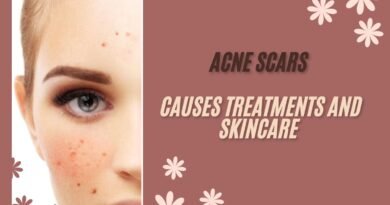Sensitive Skin 5 Common Problems Treat Them Naturally
Sensitive skin can be hard to manage, especially when it reacts to everyday products or environmental changes. If your skin often feels itchy, burns, or turns red, you’re likely dealing with sensitive skin. In this blog post, we’ll cover the top 5 sensitive skin problems and how to treat them naturally and effectively. Whether you’re looking to switch skincare routines or understand your skin better, this guide is a great starting point.
1. Redness and Irritation on Sensitive Skin
Problem:
Redness and irritation are among the most common skin problems people with sensitive skin experience. Red patches can appear after using certain cleansers, toners, or even from weather changes.
Cause:
Often, redness is triggered by harsh chemicals, alcohol-based products, or temperature shifts. Rubbing your skin or over-exfoliating can also make it worse.
How to Treat:
- Use fragrance-free and alcohol-free products.
- Look for calming ingredients like chamomile, aloe vera, or green tea.
- Always patch test new skincare items.
- Avoid hot showers and over-washing your face.
2. Dryness and Flaky Skin
Problem:
Dry, flaky skin can be uncomfortable and make your complexion appear dull or rough. Sensitive skin is often more prone to moisture loss, especially in cold weather.
Cause:
Many cleansers strip away natural oils. Skipping moisturizer or using the wrong one can also lead to flaky skin.
How to Treat:
- Use a hydrating cleanser (avoid foaming types).
- Moisturize daily with ceramide-based or hyaluronic acid creams.
- Apply moisturizer while your skin is still damp to lock in hydration.
- Drink plenty of water throughout the day.
3. Product Breakouts and Allergic Reactions
Problem:
Sensitive skin often reacts badly to new products, causing breakouts or rashes. This may look like acne but could be a form of contact dermatitis.
Cause:
Fragrance, essential oils, dyes, and preservatives in skincare products can all trigger breakouts or allergic reactions.
How to Treat:
- Stick to hypoallergenic and non-comedogenic products.
- Always do a patch test before using something new.
- Avoid trendy ingredients unless you know they suit your skin.
- Less is more—keep your skincare routine simple.
4. Sun Sensitivity and Skin Damage
Problem:
Sensitive skin can react strongly to sun exposure, leading to redness, sunburn, and even rashes. This makes sun protection even more important for people with sensitive skin.
Cause:
UV rays damage the outer skin layer, making it more prone to inflammation and long-term issues like premature aging or hyperpigmentation.
How to Treat:
- Apply mineral-based sunscreen daily (look for zinc oxide or titanium dioxide).
- Wear wide-brimmed hats and sunglasses.
- Avoid direct sun during peak hours (10 AM to 4 PM).
- Reapply sunscreen every 2 hours when outdoors.
5. Burning or Stinging Sensation After Applying Products
Problem:
If your skin burns or stings after applying a new product, it could mean your skin barrier is weak or the product contains harsh ingredients.
Cause:
This often happens with active ingredients like retinol, AHAs, or BHAs, which are too strong for sensitive skin types.
How to Treat:
- Choose products with gentle exfoliants like lactic acid or PHA.
- Avoid using too many products at once.
- Strengthen your skin barrier with ingredients like niacinamide, ceramides, or squalane.
- Introduce new products slowly, starting once or twice a week.
Sum Up:
Managing sensitive skin is all about understanding what triggers irritation and choosing products that are gentle and hydrating. By focusing on the right skincare routine and avoiding harsh ingredients, you can reduce redness, dryness, and other issues.
Remember, what works for others may not work for you. Always listen to your skin and seek advice from a dermatologist if symptoms persist.



Pingback: How to Test Your Skin Type at Home? Dermatologist Guide